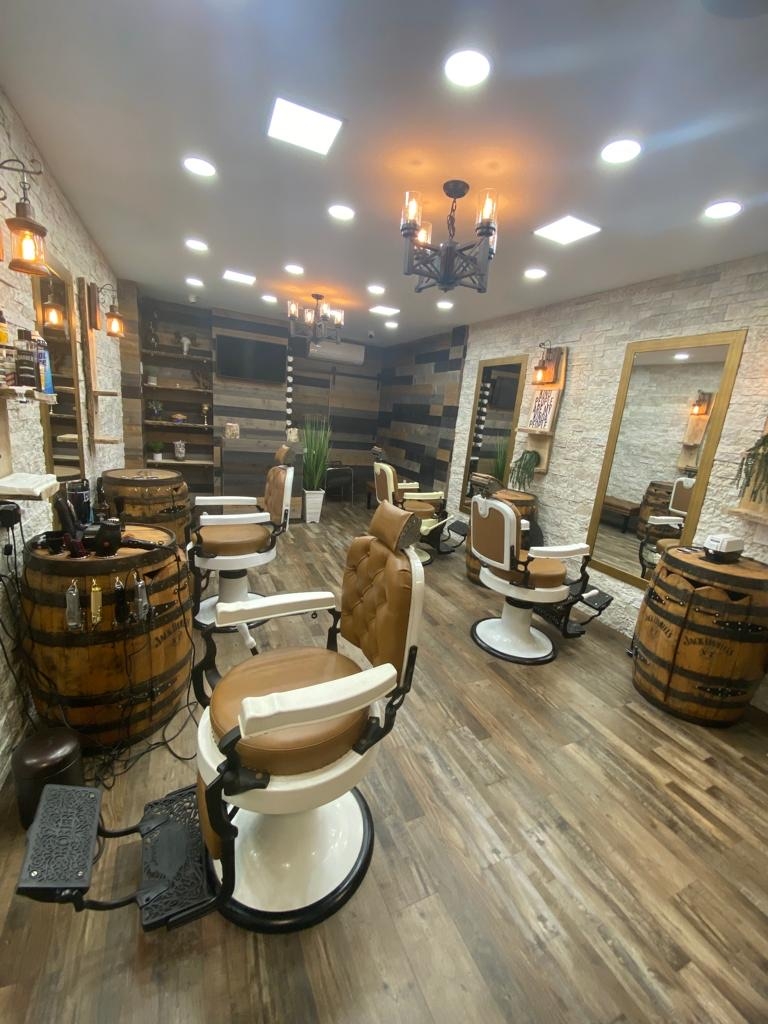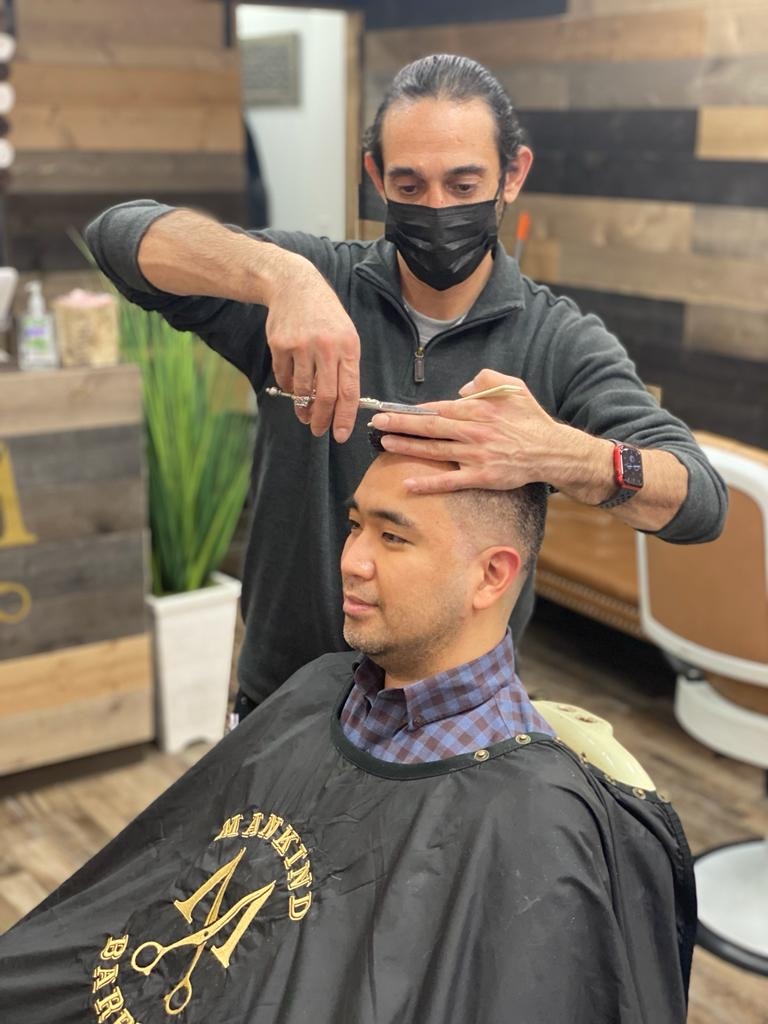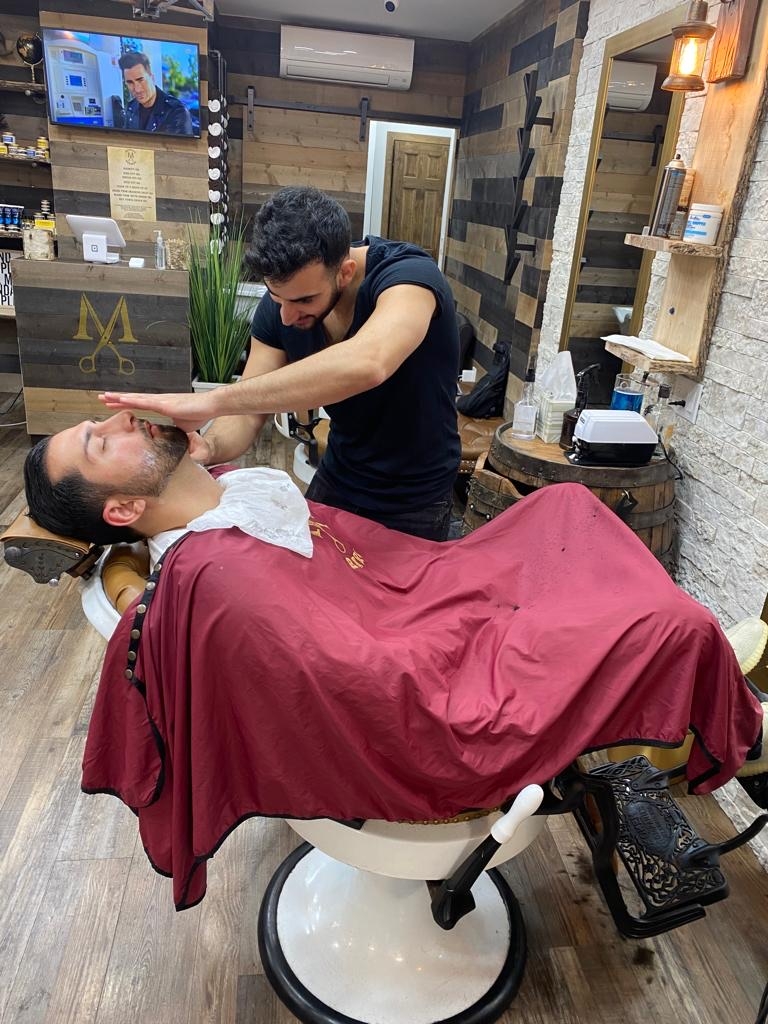

Synthetic honing stones for straight razors are typically made from materials like aluminum oxide or silicon carbide, offering consistent grit sizes and hardness levels. On the other hand, natural honing stones, such as Arkansas stones or Belgian Coticules, are quarried from specific regions and can vary in grit size and composition. While synthetic stones are more uniform and durable, natural stones are prized for their unique sharpening properties and ability to create a keen edge on straight razor blades.
To maintain the effectiveness of straight razor honing stones, it is recommended to flatten them regularly, especially if they develop uneven surfaces or grooves from repeated use. Depending on the frequency of use, honing stones should be flattened every few months or whenever visible imperfections start to affect the sharpening process. Flattening the stones ensures a consistent sharpening surface and helps prolong their lifespan.
Following a devastating fire, Edinburgh based barbershop Sink and Anchor were forced to completely overhaul their premises. We caught up with the owners to find out one barbershop built back better… When did Sink and Anchor re-open? We re-opened on Tuesday 15 August 2023. The refurbishment took place due to unforeseen circumstances. Can you tell The post How One Barbershop Built Back Better appeared first on Modern Barber.

Posted by on 2024-03-15
We chatted to barber Jon Dryer about some of the most memorable locations he’s cut hair, and where he would like to go next… How did your career start? I had odd jobs growing up, but I knew I needed to get a real career. I knew I didn’t want to do anything that involved The post Cutting in Extreme Locations with Jon Dryer appeared first on Modern Barber.

Posted by on 2024-03-15
Trying to get your work into the press can be a daunting task, especially when you work solo as a freelance barber – which is why we’re sharing these nine tips on how to secure press coverage… Invest Time Sending emails out to magazines, newspapers and sites on a regular, consistent basis increases the likelihood The post Tips for Getting Press Coverage as a Freelance Barber appeared first on Modern Barber.
Posted by on 2024-03-15
Book your tickets for the Modern Barber Awards and join us for a night of barbering inspiration. It’s time to mark your calendars and get your tickets to this year’s awards ceremony at the Telford International Centre on Sunday 23 June – coinciding with our unmissable event, Barber Connect. The evening promises a to be The post Have You Booked Your Tickets For The Modern Barber Awards? appeared first on Modern Barber.
Posted by on 2024-03-13
In Modern Barber Trend Talks, Hayden Cassidy talks collaborations, authenticity, and what to watch… “I love a buzzcut. There are so many details that go into perfecting the haircut. To the eye it looks simple, but to perfect a buzzcut, it’s all about the details and execution. It’s like a secret skill.” 6 Things That The post Modern Barber Trend Talks: Hayden Cassidy appeared first on Modern Barber.
Posted by on 2024-03-08
Honing stones can be used to repair minor nicks and chips on a straight razor blade, but it requires skill and patience to achieve a smooth and even edge. By carefully working the blade against the stone at the correct angle and pressure, small imperfections can be gradually removed. However, for more significant damage, it is advisable to seek professional sharpening services to avoid further harm to the blade.

Achieving different levels of sharpness on a straight razor using honing stones involves varying techniques such as adjusting the angle of the blade against the stone, applying consistent pressure, and using different grit sizes in a progression. For a fine edge, a higher grit stone is used after coarser stones to refine the sharpness. Experimenting with different techniques and honing sequences can help achieve the desired level of sharpness for a straight razor.
When sharpening a straight razor, it is recommended to use a progression of grit sizes on honing stones, starting from a coarse grit (around 1000) to remove nicks and dullness, then moving to medium grit (2000-4000) for refining the edge, and finishing with a fine grit (6000-8000) for polishing and achieving a razor-sharp edge. This gradual progression helps in achieving a smooth and sharp blade suitable for shaving.

To clean and maintain honing stones for straight razors, it is essential to regularly remove metal particles and debris that accumulate on the surface during sharpening. This can be done by using a stone flattener or a cleaning solution specifically designed for honing stones. Additionally, storing the stones in a dry and cool place away from moisture and direct sunlight can help prolong their lifespan and maintain their sharpening properties.
When using honing stones on vintage or high-end straight razors, special considerations should be taken to preserve the integrity of the blade and handle. It is important to handle the razor with care and avoid applying excessive pressure or using aggressive sharpening techniques that could damage the blade. Additionally, using high-quality honing stones and following proper sharpening procedures can help maintain the value and condition of vintage or high-end straight razors.

Barber capes with snaps offer several advantages over those with velcro closures. The snaps provide a secure and adjustable fit, ensuring that the cape stays in place during haircuts. This feature allows for easy removal and reattachment, making it convenient for barbers to adjust the cape as needed. Additionally, snaps are more durable than velcro closures, as they are less likely to wear out or become less effective over time. The snaps also create a sleek and professional look, enhancing the overall appearance of the barber while working. Overall, barber capes with snaps offer a more reliable and long-lasting solution for barbers looking to provide a comfortable and efficient experience for their clients.
When using a straight razor for shaving, it is important to follow several safety precautions to prevent accidents and injuries. First, ensure that the razor blade is sharp and properly maintained to avoid nicks and cuts. It is also recommended to use a shaving cream or gel to provide lubrication and reduce friction on the skin. Additionally, always shave in the direction of hair growth to minimize irritation and ingrown hairs. Be sure to hold the razor at the correct angle and apply gentle pressure to avoid cutting yourself. After shaving, rinse the razor thoroughly and store it in a safe place away from children and pets. By following these safety precautions, one can enjoy a smooth and safe shaving experience with a straight razor.
To maintain the optimal temperature for a hot lather machine, it is essential to regularly check the thermostat settings and ensure they are calibrated correctly. Additionally, it is important to monitor the water level in the machine to prevent overheating or cooling. Proper insulation around the machine can help retain heat and regulate temperature fluctuations. Regular cleaning and maintenance of the heating elements and water reservoir can also contribute to consistent temperature control. Using high-quality shaving cream specifically designed for hot lather machines can help maintain the desired temperature and prevent clogs or malfunctions. Overall, following these steps can help ensure the hot lather machine operates at its optimal temperature for a smooth and comfortable shaving experience.
To effectively clean hair buildup from clipper blades, one can start by removing the blades from the clipper and using a small brush or toothbrush to gently scrub away any excess hair. Next, soaking the blades in a mixture of warm water and blade wash solution can help to break down any stubborn buildup. Using a blade wash solution specifically designed for clipper blades can help to disinfect and lubricate the blades as well. After soaking, thoroughly dry the blades and reattach them to the clipper. Regular maintenance and cleaning of clipper blades can help to prolong their lifespan and ensure a smooth cutting experience.
To properly adjust the blade depth on an adjustable safety razor, one must first ensure that the razor is fully assembled and ready for use. Next, locate the adjustment dial or knob on the razor handle, which is typically found near the base of the razor head. Carefully turn the dial or knob in the desired direction to adjust the blade depth to the desired setting. It is important to make small adjustments and test the razor on a small area of skin to ensure the blade depth is set correctly. Some razors may have numbered settings to indicate the blade depth level, while others may require a more manual adjustment process. Once the blade depth is set to the desired level, tighten the adjustment dial or knob to secure the blade in place before shaving. Remember to always exercise caution when adjusting the blade depth to prevent any accidents or injuries.
When selecting the best type of blade for a shavette razor, it is important to consider the sharpness, durability, and compatibility with the razor. Many users prefer stainless steel blades for their longevity and resistance to rust. Additionally, platinum-coated blades are known for their smooth shaving experience. Feather blades are highly regarded for their sharpness and precision, making them a popular choice among experienced shavers. It is recommended to experiment with different brands and types of blades to find the one that best suits individual preferences and skin types. Ultimately, the best blade for a shavette razor will depend on personal preference and shaving technique.